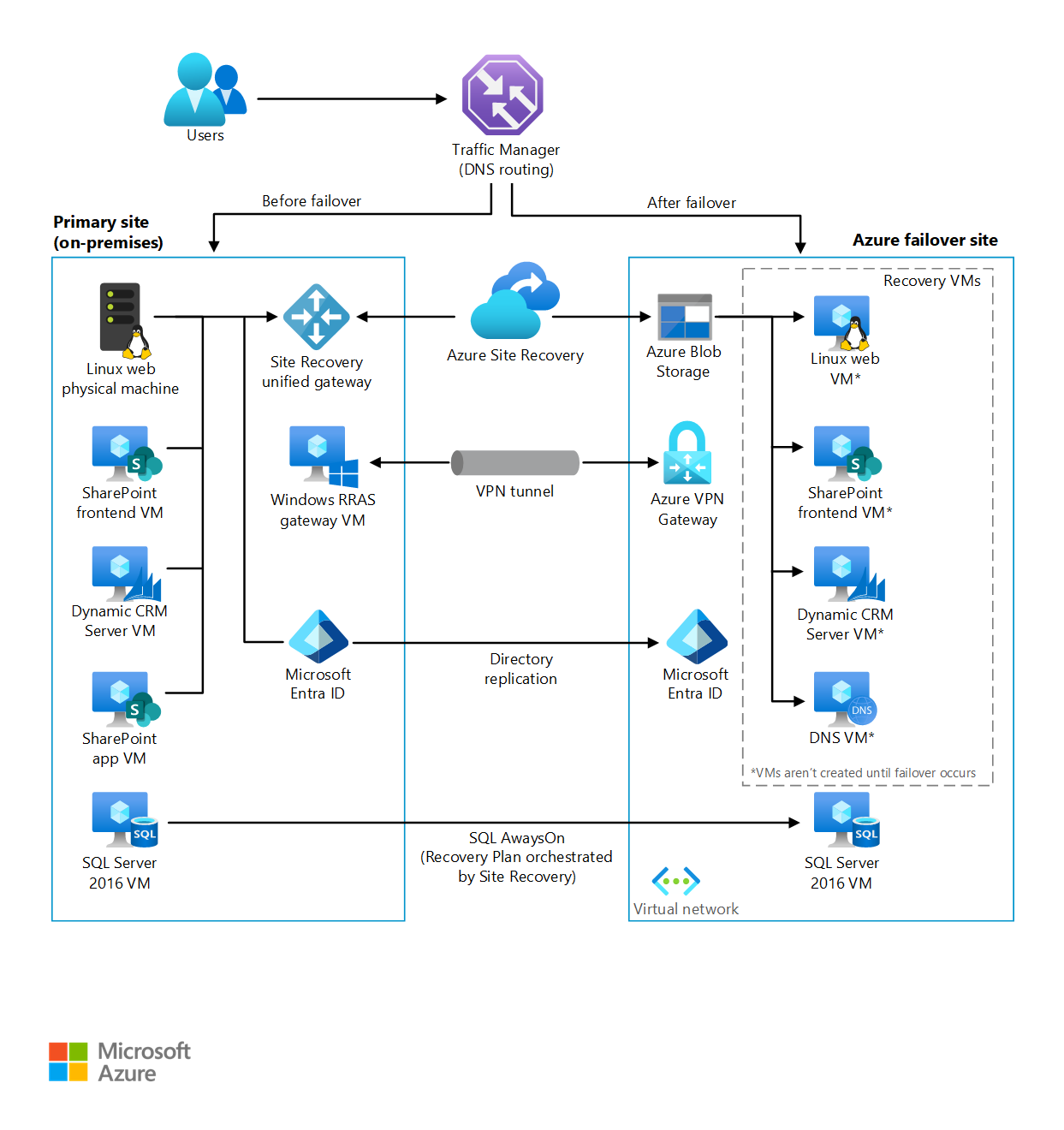Solution ideas
This article is a solution idea. If you'd like us to expand the content with more information, such as potential use cases, alternative services, implementation considerations, or pricing guidance, let us know by providing GitHub feedback.
A large enterprise architecture for SharePoint, Dynamics CRM, and Linux web servers hosted on an on-premises datacenter with failover to Azure infrastructure.
This solution is built on the Azure managed services: Traffic Manager, Azure Site Recovery, Microsoft Entra ID, VPN Gateway, and Virtual Network. These services run in a high-availability environment, patched and supported, allowing you to focus on your solution instead of the environment they run in.
Potential use cases
Organizations that utilize this service include:
- Hospitals (healthcare)
- Universities (education)
- Government (local, state, and federal)
Architecture
Download a Visio file of this architecture.
Components
- DNS traffic is routed via Traffic Manager, which can easily move traffic from one site to another based on policies defined by your organization.
- Azure Site Recovery orchestrates the replication of machines and manages the configuration of the failback procedures.
- Blob storage stores the replica images of all machines that are protected by Site Recovery.
- Microsoft Entra ID is the replica of the on-premises Microsoft Entra ID services allowing cloud applications to be authenticated and authorized by your company.
- VPN Gateway: The VPN gateway maintains the communication between the on-premises network and the cloud network securely and privately.
- Virtual Network: The virtual network is where the failover site will be created when a disaster occurs.
Contributors
This article is maintained by Microsoft. It was originally written by the following contributors.
Principal author:
- Larry Claman | Principal Technology Architect
